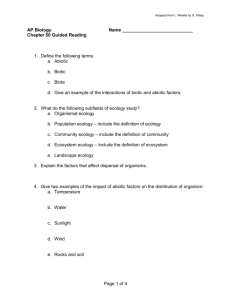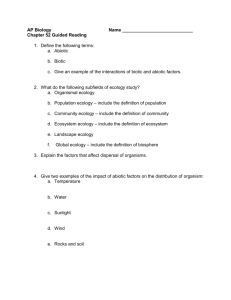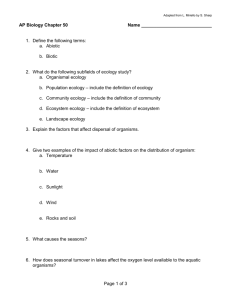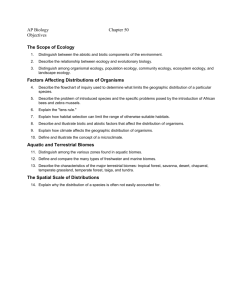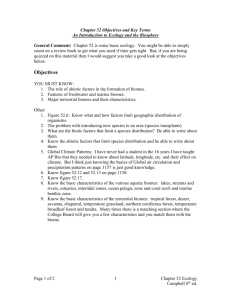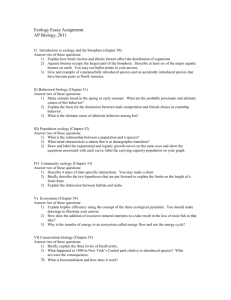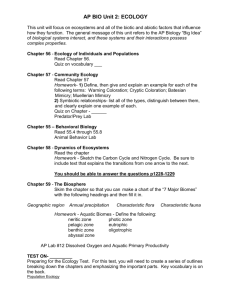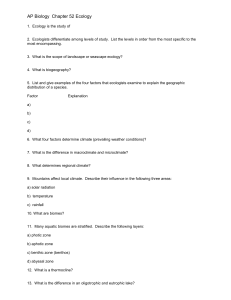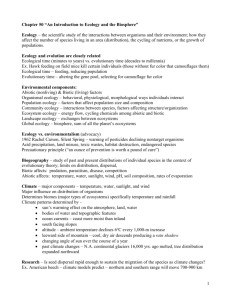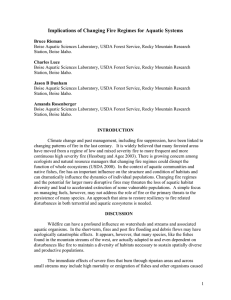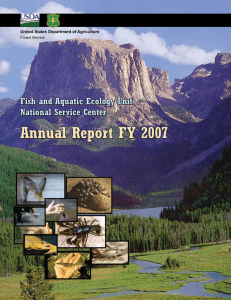AP Biology
advertisement
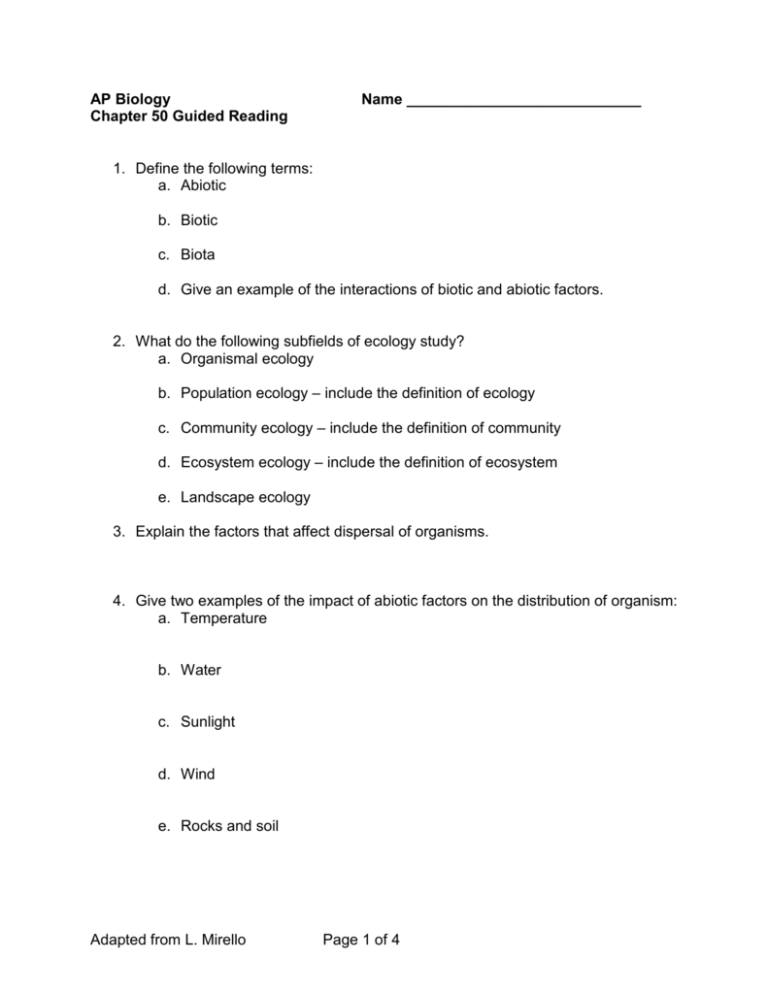
AP Biology Chapter 50 Guided Reading Name ____________________________ 1. Define the following terms: a. Abiotic b. Biotic c. Biota d. Give an example of the interactions of biotic and abiotic factors. 2. What do the following subfields of ecology study? a. Organismal ecology b. Population ecology – include the definition of ecology c. Community ecology – include the definition of community d. Ecosystem ecology – include the definition of ecosystem e. Landscape ecology 3. Explain the factors that affect dispersal of organisms. 4. Give two examples of the impact of abiotic factors on the distribution of organism: a. Temperature b. Water c. Sunlight d. Wind e. Rocks and soil Adapted from L. Mirello Page 1 of 4 5. What is the difference between macroclimate and microclimate? 6. How does latitude affect sunlight intensity? 7. What causes the seasons? 8. Explain how mountains affect rainfall? 9. How does seasonal turnover in lakes affect the oxygen level available to the aquatic organisms? 10. Label the below listed diagrams of aquatic and marine environments – also include a written description of the zone. a. Aquatic b. Marine Adapted from L. Mirello Page 2 of 4 11. Describe the following aquatic biomes – write enough to use this guided reading as a study guide for the test. a. Lakes b. Wetlands c. Streams and Rivers d. Estuaries e. Intertidal Zones f. Ocean Pelagic Biome g. Coral Reef h. Marine Benthic Zone 12. How does temperature and precipitation impact the distribution of terrestrial biomes? Use figure 50.18 to answer this question. This is a core concept. Adapted from L. Mirello Page 3 of 4 13. Describe the following terrestrial biomes – write enough to use this guided reading as a study guide for the test. a. Tropical forest b. Desert c. Savanna d. Chaparral e. Temperate grassland f. Coniferous forest g. Temperate broadleaf forest h. Tundra Adapted from L. Mirello Page 4 of 4
